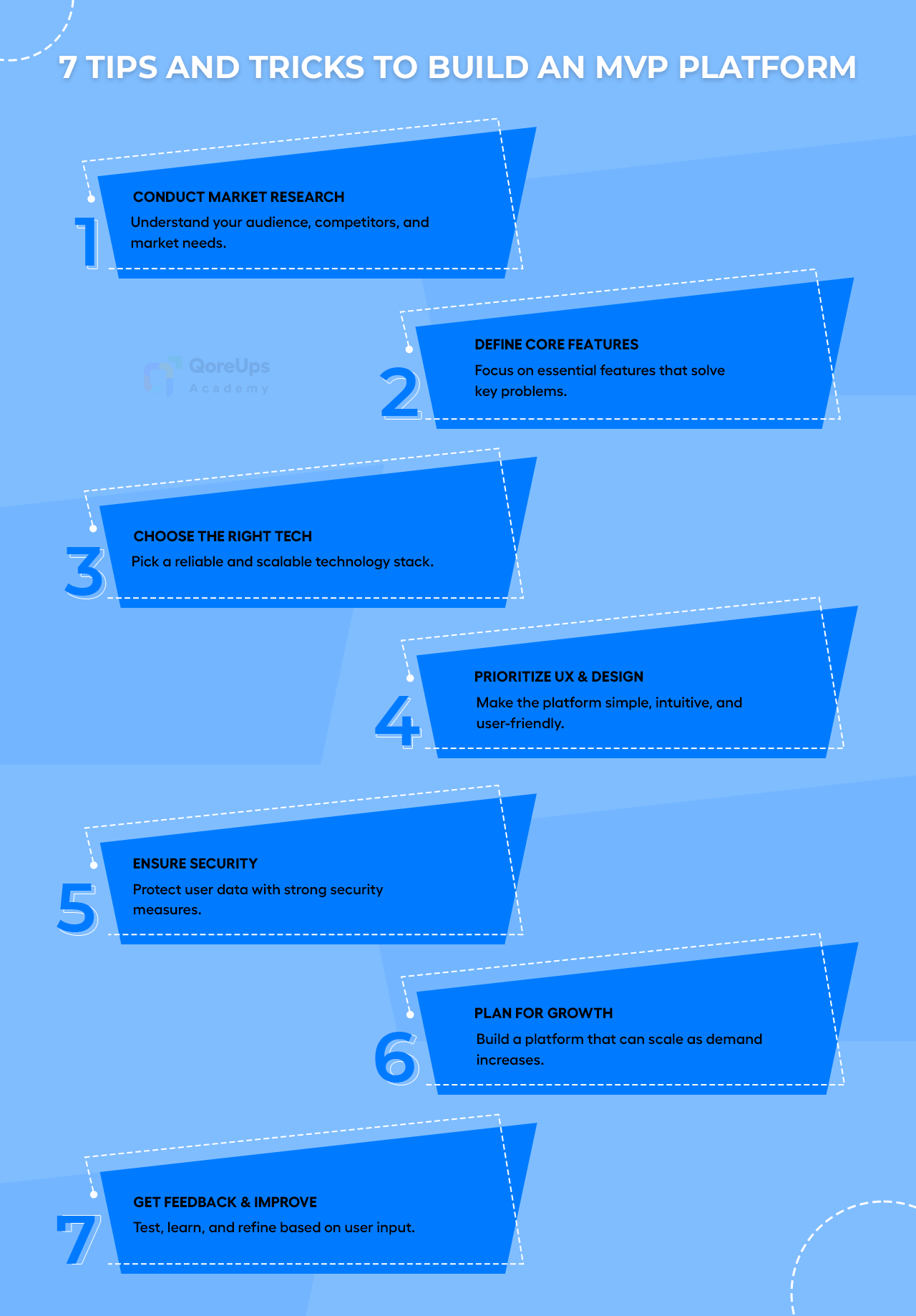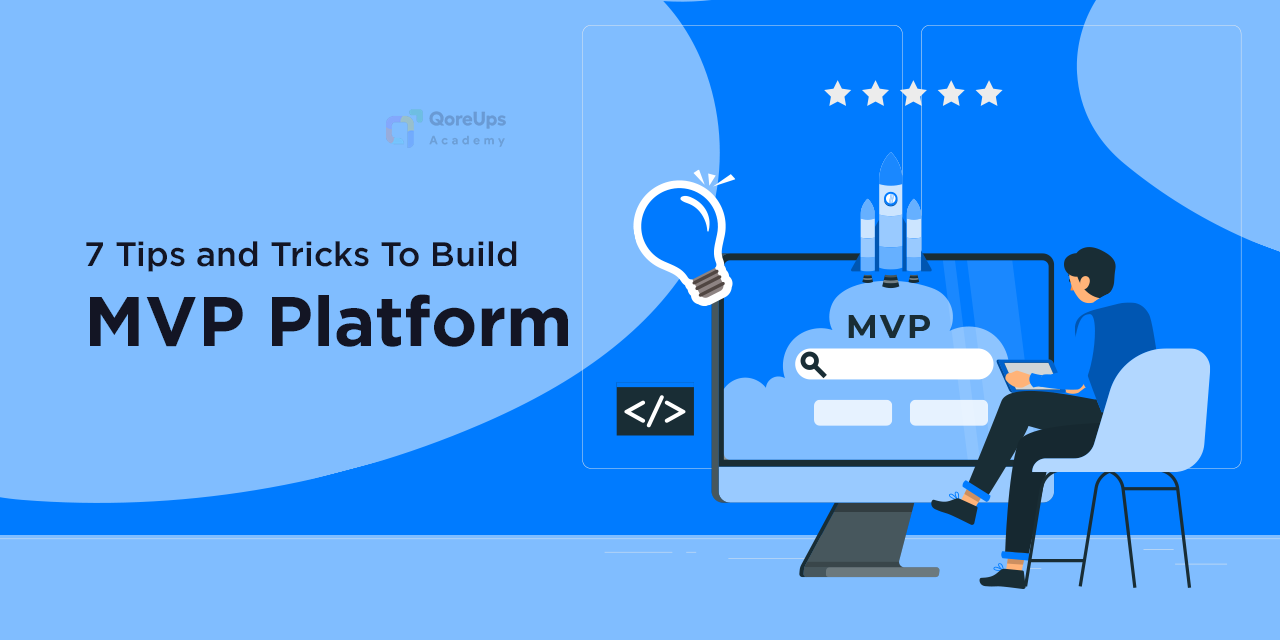In today’s fast-paced digital world, launching a marketplace can be a game-changer for entrepreneurs.
However, diving straight into full-scale development can be both risky and expensive.
This is where the concept of a Minimum Viable Platform (MVP) comes into play.
An MVP platform allows you to create a basic version of your platform to test the market, gather feedback, and iterate without investing a significant amount of time and resources.
In this blog, we will delve into what an MVP platform is, why it’s crucial for your marketplace business, and provide you with 7 essential tips and tricks to build a successful MVP platform in 2025.
What is an MVP Platform in a Marketplace?
An MVP platform is the initial version of a marketplace that includes only the core functionalities necessary to address the primary needs of its users.
The goal is to validate the business idea with minimal resources before investing in a full-fledged product.
For a marketplace, this typically means focusing on features that facilitate basic interactions between buyers and sellers, such as user registration, product listing, search functionality, and payment processing.
Key Characteristics of an MVP Platform:
- Core Features Only: It includes essential features to meet user needs.
- User Feedback Driven: Designed to gather user feedback for future iterations.
- Cost-Effective: Requires minimal investment to build and launch.
- Scalable: Built with a foundation that can be scaled up with additional features.
Why You Need to Start a Marketplace Business with an MVP Platform
Starting with an MVP platform offers several advantages for marketplace businesses:
- Cost Efficiency: Developing an MVP is less resource-intensive compared to building a fully-featured product. It allows you to allocate resources wisely and avoid unnecessary expenses upfront.
- Faster Time to Market: By focusing on essential features, you can expedite the development process and get your product in front of users sooner. This early market entry helps in capturing initial traction and gaining valuable insights.
- User Feedback and Validation: An MVP enables you to collect feedback from early adopters and validate your assumptions about user needs and preferences. This feedback loop is crucial for refining your product roadmap and improving user experience.
- Iterative Development: Building an MVP encourages an iterative approach to product development. You can gradually add features based on user feedback and market demands, reducing the risk of building features that users may not find valuable.
- Risk Mitigation: By testing your business idea with an MVP, you can identify potential pitfalls and market challenges early on. Before accessing an important resource, this testing approach is a useful one to make adjustments.
- Attracting Investors: Investors are often more willing to fund startups that have validated their ideas with an MVP. Showing traction, user engagement, and a clear path to growth increases your credibility and attractiveness to potential investors.
- Building a Scalable Foundation: Starting with an MVP allows you to build a scalable foundation for your marketplace business. You can refine your business model, optimize operations, and prepare for future growth phases with a solid base of validated learnings.
7 Tips and Tricks to Build an MVP Platform in 2025
Now that we understand the importance of an MVP platform, let’s delve into actionable tips and tricks to effectively build one:
Conduct Thorough Market Research
Before diving into development, it’s crucial to understand your target market.
Identify your potential users, their pain points, and the solutions they are seeking.
Taking detailed surveys, customer interviews, and analyzing competitors provides a list of insights to you.
This research will help you define the core features your MVP needs to address
Action Steps:
- Search the target audience and find their personas.
- Start competitor analysis.
- Conduct surveys and interviews to gather direct feedback from potential users.
Define Clear Objectives and Core Features
Clearly outline the primary goals of your MVP platform and the core MVP features required to achieve these goals.
Avoid feature creep by focusing only on the essential functionalities that solve your users’ most pressing problems.
Action Steps:
- List the key problems your marketplace aims to solve.
- Define the minimum set of features required to address these problems.
- Prioritize essential features.
Choose the Right Technology Stack
Select the right technology to create an MVP Platform.
Opt for technologies that allow for rapid development and are scalable.
Consider using a SaaS marketplace platform builder. So, that you can speed up the development process.
Action Steps:
- Evaluate different technology stacks based on your needs and budget.
- Consider using platforms like WordPress, Magento, or Shopify for quicker development.
- Ensure the chosen technology is scalable and can handle future growth.
Focus on User Experience (UX) and Design
A seamless and intuitive user experience is vital for the success of your MVP Platform.
Even with limited features, your platform should be easy to navigate and visually appealing.
To satisfy the users, who prefer good UI/UX designs
Action Steps:
- Design wireframes and mockups of your MVP Platform.
- Conduct usability testing to identify and fix potential issues.
- Ensure the platform is responsive and works well on various devices.
Implement Robust Security Measures
Security is a critical aspect of any online marketplace.
Ensure that your MVP Platform includes essential security features to protect user data and transactions.
This will build trust with your early adopters and set a solid foundation for future growth.
Action Steps:
- Implement secure user authentication and authorization mechanisms.
- Use SSL certificates to encrypt data transmitted between users and the platform.
- Update and check the software against any issues to ensure hassle-free execution.
Plan for Scalability
While your MVP Platform should be minimal, it’s important to build it with scalability in mind.
Choose a flexible architecture that can accommodate new features and increased user load as your platform grows.
Action Steps:
- Opt for a modular architecture that allows for easy addition of new features.
- Use scalable hosting solutions that can handle traffic spikes.
- Check all the metrics to validate the performance and find the relevant issues.
Gather Feedback and Iterate
Once your MVP is live, continuously gather feedback from users to identify areas for improvement.
Use this feedback to make informed decisions about which features to develop next and how to refine your MVP Platform.
Action Steps:
- Set up mechanisms for collecting user feedback, such as surveys and feedback forms.
- Analyze feedback to identify common themes and prioritize improvements.
- Release updates regularly to address user feedback and enhance the platform.

Conclusion
Building an MVP platform for your marketplace business in 2025 is a strategic approach.
This platform allows you to investigate your marketplace idea, collect feedback, and do analysis quickly.
By following the tips and tricks outlined in this blog, you can create a solid foundation for your marketplace and set the stage for future success.
Remember, the key to a successful MVP is focusing on core functionalities, delivering a great user experience, and continuously improving based on user feedback. Start small, learn fast, and scale smartly.
Good luck with your MVP platform journey!






